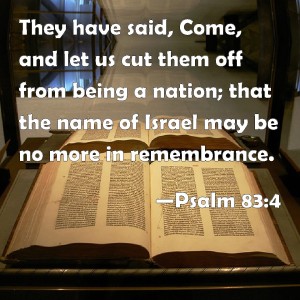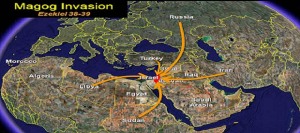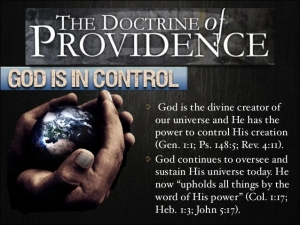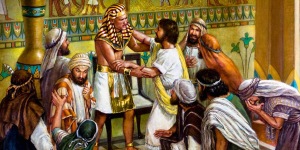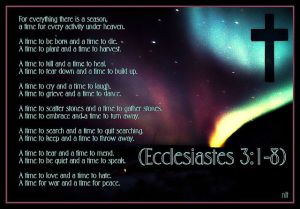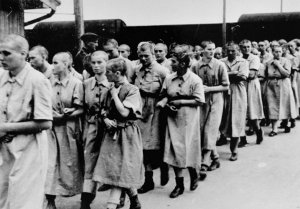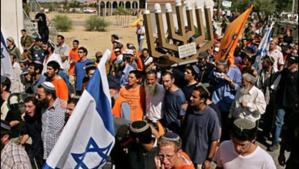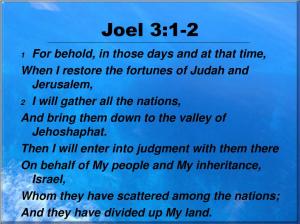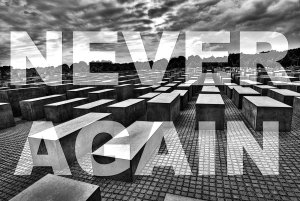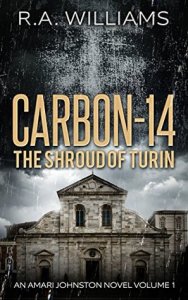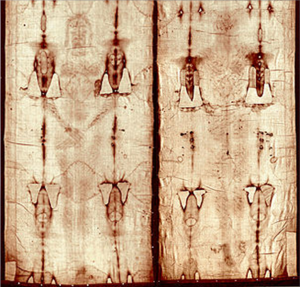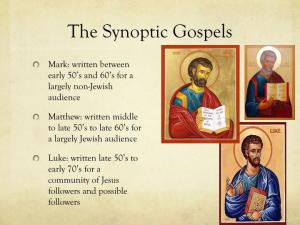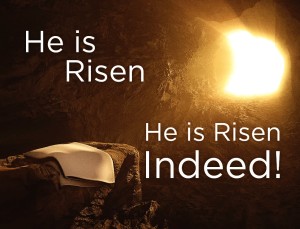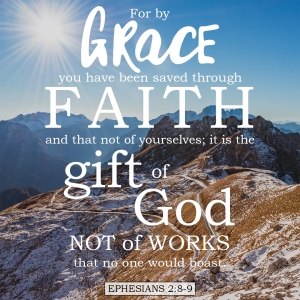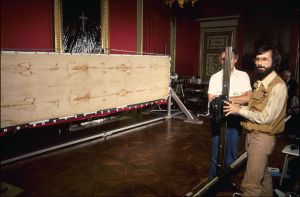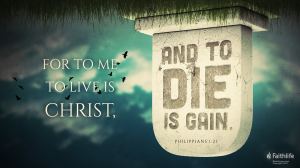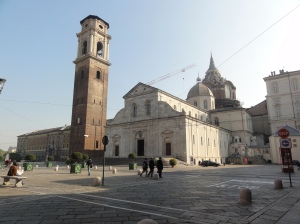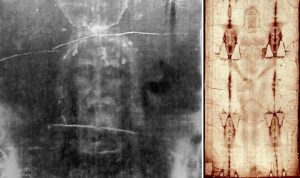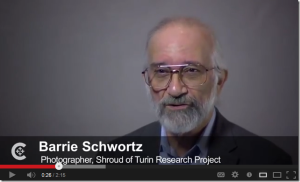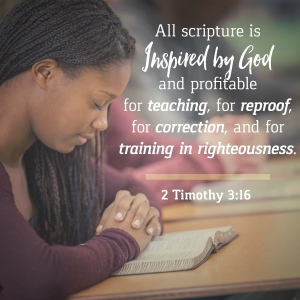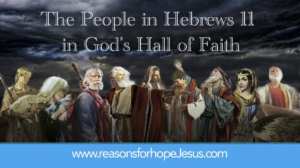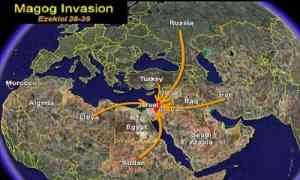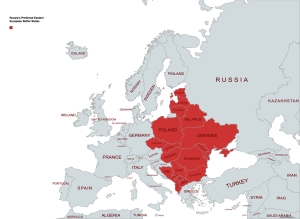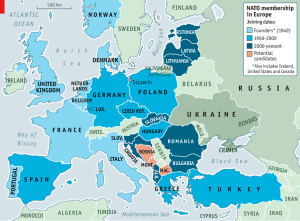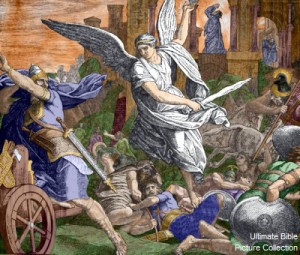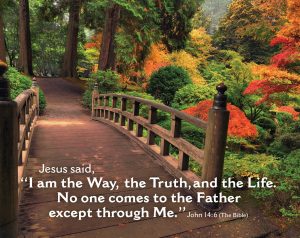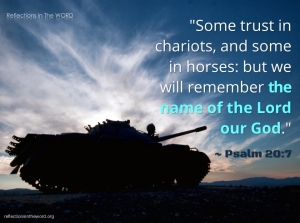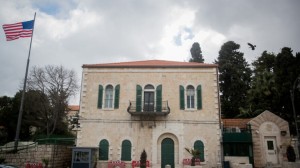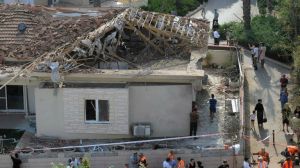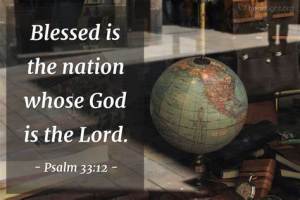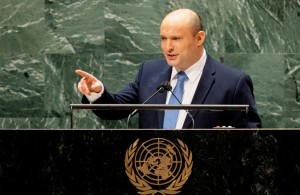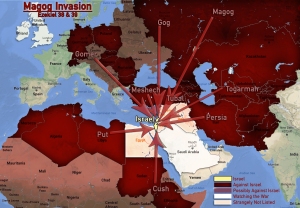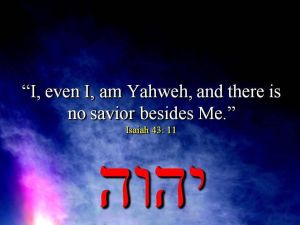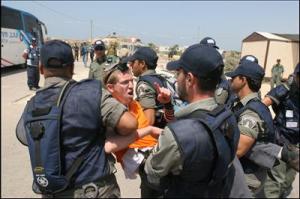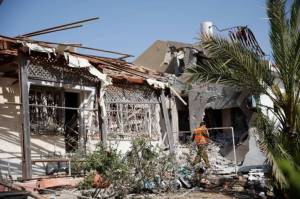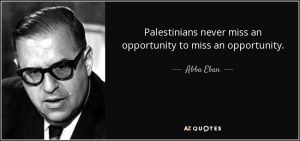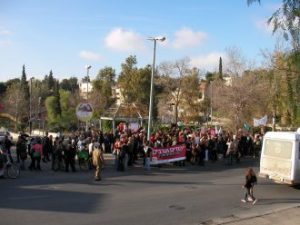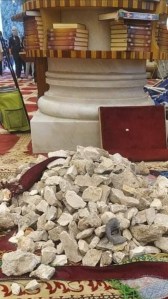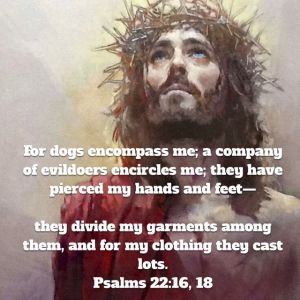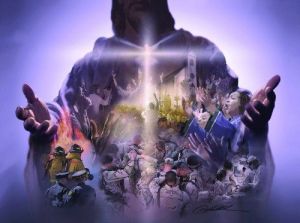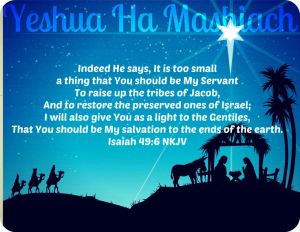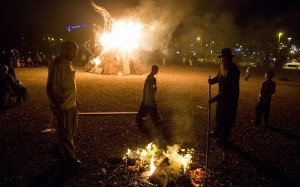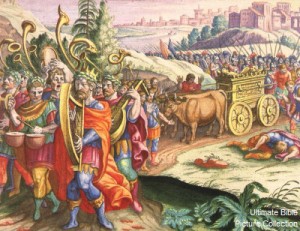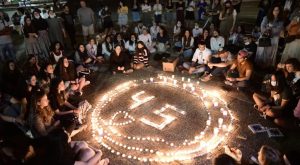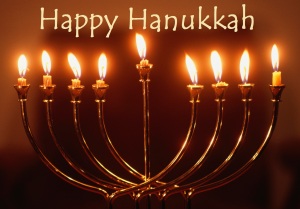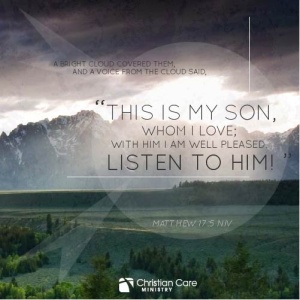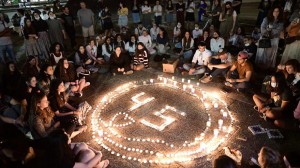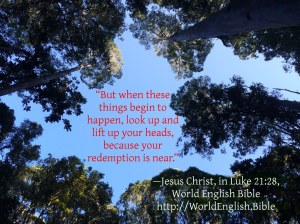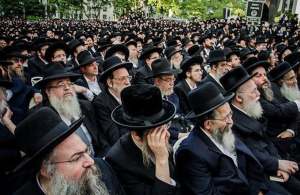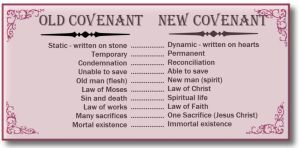This article is a sequel to the prior Eye of Prophecy article: Hamas’ Horrifying Attack on Israel … A Preview of Two Coming Invasions
“Israel did not start this war. Israel did not want this war. But Israel will win this war.”
That is a moving quote from Israel’s Prime Minister Benjamin Netanyahu, as cited in the previous Eye of Prophecy article.
I then said: Prime Minister Netanyahu continued with his poignant, penetrating, and powerful portrayal of Hamas’ sadistic strike against Israeli Jews (and some foreigners), calling it, “the worst savagery our people have seen since the Holocaust. Hamas murdered children in front of their parents, murdered parents in front of their children. They burned people alive, they raped women, they beheaded men, they tortured Holocaust survivors, they kidnapped babies.”
He continued: “In fighting Hamas and the Iranian axis of terror, Israel is fighting the enemies of civilization itself. It begins with knowing the difference between good and evil, between right and wrong… It means making a moral distinction between the deliberate murder of the innocent and the unintentional casualties that accompany every legitimate war.”
Providing some consolation to Israel and to those who support her, the revised count of Israeli and some foreigner fatalities (mostly civilian including many women and children) has been reduced from 1,400 to 1,200. Still, more murdered and injured (hideously so) since the Holocaust.
When I began this Eye of Prophecy article, another positive (with some negatives) development has taken place: An Israeli decision to implement a cease fire even though anything approaching an extended ceasefire will probably result in more IDF casualties in Israel’s totally justified war against a well-armed terrorist organization.
Reason for the ceasefire: An exchange of Hamas held hostages for Palestinian prisoners in Israeli jails. The exchange began on 11-25-2023, with an intended three-to-one exchange rate favoring Palestinians over the hostages … 150 Palestinian prisoners, 50 Israeli hostages. With, however, a firm disclaimer from Israel that the ceasefire is limited and that the IDF will continue the war until Hamas ceases to function or even to exist.
The original cease-fire was extended but ended abruptly the morning of December 1 (yesterday) when Hamas launched missiles from Gaza into Israel and fired on Israeli soldiers in Gaza. As of today’s date, the most accurate figures appear to be 83 Israeli Jews released (mostly women and children plus 24 foreign nationals … 23 from Thailand and 1 from the Philippines). With 240 Palestinian prisoners freed, mostly teenagers and women.
On November 30th in the USA Today section of the newspaper that I subscribe to (The Arizona Republic), it read: “The Israeli military said it was investigating the veracity of a Hamas announcement Wednesday that three Israeli hostages have died, ‘as a result of a former Zionist bombing on the Gaza Strip,’ apparently prior to the start of the cease-fire.
“Al-Qassam Brigades, the military wing of Hamas, said in the Telegram post that Shiri Silverman Bibas, 32, her 4-year-old son Ariel and her 10-month-old son Kfir Bibas had died” (Italics for emphasis).
Deviously incredible! Disgustingly unbelievable!
Even if Israeli bombings resulted in the deaths of this family, why was a young child and his infant brother (along with their mother) there in the first place? Where were they being held when they were killed by “Zionist bombs?” Apparently, Hamas decided that this family should be transferred from their horrible home in Israel to a five-star tunnel room in Gaza where they would be much happier. Or maybe allowing them to roam around in a Hamas compound that Israel warned Gazan civilians would be bombed.
Sarcastic … indeed, as much as is warranted! You can decide how much.
(Photos of the three Israeli hostages)
Realizing the difficulty, I will endeavor to place this brutal terrorist attack and the resulting war still waging in the Gaza Strip in a broader context with some crucial correlations necessary for a more panoramic perspective. And what better way than to rely heavily on the superior source of unchangeable truth and comprehensive knowledge known to humanity—the everlasting Word of God.
The Bible: Explaining and exploring the life-giving, eternal destiny altering salvation available to all—Jew and Gentile (including Palestinians) alike within the pages of Scripture. With its problem-solving solutions for a world gone mad; drunk with hatred, saturated with and staggered by violence. Solutions found and bound in the true and living God—who refers to himself (among other magnificent names/tittles) as the God of Abraham, Isaac, and Jacob. The God who, through His Son, will right all wrongs; will bring light to the nations; will dissolve the darkness that coves the earth.
Whose Son, the Messiah, as the Prince of Peace, will establish a Kingdom of Justice, Righteousness, and Peace (Isaiah 9:6-7)!
Considering the shocking death and destruction inflicted by Hamas beginning in the early morning hours of October 7 when many Israelis were still in bed, even the observant (religious … as the majority of Israeli Jews are essentially secular) among them may brought to mind the words of Isaiah written long ago:
“Yet Jerusalem says, ‘The Lord has deserted us; the Lord has forgotten us” (Isaiah 49:14).
Undoubtedly, many have added the word, “again,” to this verse. Just as they agonized during and after the inconceivable Holocaust.
How many really trust what God says in the very next verse? “Never! Can a mother forget her nursing child? Can she feel no love for the child she has borne? But even if that were possible, I would not forget you!” (Isaiah 49:15).
The Absolute Truth and Remarkable Reliability of God’s Promises/Prophecies
Over and over the Bible tells us that the true and living God is a Faithful God.
His promises have been constantly proven true. As said in the prior Eye of Prophecy posts (and by others), “What God says he will do, he always does. What He says will happen, always happens.” For emphasis I will repeat: ALWAYS.
Oh, that every Jew in Israel (and the world-over) would remember and embrace one of the most comforting and compelling promises made by the LORD. A magnificent pledge given despite God’s punishment of Israel for constantly disobeying and abandoning the Lord.
“This is what the LORD says, ‘You will be in Babylon for seventy years. But then I will come and do for you all the good things I have promised, and I will bring you home again. For I know the plans I have for you,’ says the Lord. ‘They are plans for good and not for disaster, to give you a future and a hope’” (Jeremiah 29:10-11).
God has supernaturally intervened when the enemy (Satan and/or people) attempts to distort, damage, and destroy God’s Plans. Not the least of which is the inexplicable, irrational, yet malicious determination through the ages by individuals and nations to destroy Jews and Israel.
“They devise crafty schemes against your people; they conspire against your precious ones.” (Psalms 83:3),
Then, in the next verse:
God’s plans may be (with his permission) interrupted from time to time. But never are they overcome by Satan, fallen angels, or mankind’s folly, failures, or false religions and vain philosophies. Another national disaster would befall Israel when the Roman Empire killed hundreds of thousands of Jews between AD 66 and AD 70, then sacked Jerusalem and demolished the Second Temple. Followed by massive exile of Jews to the four corners of the earth, which contributed significantly to the Holocaust in Europe by Hitler and his Third Reich.
Since then, Jews the world-over have sworn, NEVER AGAIN. Never again would something so horribly vile as the Holocaust happen to them. This saying was born both of desperation and determination. And, on the authority of God’s Word proven true (as it always is), by subsequent events … it will not ever happen again.
As written in the previous post:
The Lord has sworn to Jerusalem by his own strength: ‘I will never again hand you over to your enemies. Never again will foreign warriors come and take away your grain and new wine” (Isaiah 62:1-2a & 8).
This promise carries the clear connotation of a larger, more permanent conquest of Israel such as undertaken by Assyria, Babylon, and the Roman Empire, culminating in the worst of all—the Holocaust. But despite the horrendous carnage inflicted, not the temporary one-day Hamas intrusion into Israel.
NEVER AGAIN! God will see to it.
In a series of Eye of Prophecy articles: Seven Times Seven (to the 4th Power!) Part I, II, III (posted 1-25; 2-1; and 2-8-2014), you will find exceptionally strong evidence to show that Gentile domination over Israel ended in 1967. Which is based on an extraordinary prophecy in (of all places) the book of Leviticus—Chapter 26; fulfilled in/by prophesied periods of time that started with the rebuilding of Jerusalem’s Second Temple.
Meaning that fulfillment of the prophetic passage just quoted from Isaiah Chapter 62 began when Israel was victorious in the stunning Six-Day War of 1967. Here is an excerpt from Seven Times Seven, Part III (in italics):
I vividly recall the Six-Day War … where I was and what I was doing when the news flashed around the world. Since then, I and many students of Biblical prophecy and current events have better understood the tremendous significance of Israel’s victory. But no one appreciates the impact of those six days in June and the aftermath more than the Jews, both religious and secular.
The Six-Day War took place 50 years–a Jubilee period of time–after the first milestone in Israel’s modern-day rebirth as a nation. I’m referring to the Balfour Declaration of 1917, in which Lord Balfour of Great Britain paved the way for a Jewish national homeland in Palestine by validation of the Zionist movement initiated by Jewish leaders Theodor Herzl and Chaim Weizmann. These founding fathers of modern-day Israel believed that the only solution to the “Jewish Question” was a return of the Jews to Palestine. In 1922, the League of Nations approved the Balfour Declaration via a “Mandate for Palestine.” This was the beginning of Jews returning in increasing numbers to the Holy Land and resettling the land originally given to them by God, himself. No other nation or land on the earth has a title-deed signed, sealed, and delivered by God, as does the Promised Land known as Israel.
Sadly, return of the Jews and Israel’s statehood came too late to avoid the greatest disaster in Jewish history: the Holocaust during World War II … which constituted the full and final expression of the seven times over discipline.
However, were it not for the horror of the Holocaust, there would have been no United Nations approval of a Jewish Homeland (November 1947); then the subsequent establishment of the State of Israel in May 1948. Immediately five Arab countries attacked the fledgling state of Israel with the express purpose of erasing Israel from existence before she could even show up on global maps of the earth….
On paper, there’s absolutely no way that Israel should have defeated her enemies in 1948. But then the God of Israel is not a paper god, nor a god invented by man. He is the true and living God. With him any victory is possible; without him all the military might in the world is useless. Just ask the inhabitants of Jericho, whose walls were virtually impenetrable!
…Our God, the God of Abraham, Isaac, and Jacob is an awesome God! All other gods are imposters. No, they are not imposters … they are non-existent! They are figments of vain imaginations. They cannot make their predictions come true like the God of the Judeo-Christian Bible can. In fact, they dare not make predictions. Our God IS God! Our Messiah IS Messiah! We await his soon return … come quickly Lord Jesus!
The Ultimate Significance of 1967
Not until the Six-Day War, did Israel really possess and then demonstrate the capacity to take the offensive against Arab armies. Meaning, that their military (IDF) was strong enough to recapture Jerusalem from the Jordanians, to take back the Western Wall and Temple Mount. They were skilled enough to literally take the high ground of the Golan Heights from Syria and equipped enough to retake Gaza and Sinai from Egypt. From international pressure including the United States, Israel gave back much of this territory including the Temple Mount (the most holy Jewish site in the most Holy City of Jerusalem); but they still exercise ultimate authority over these strategic areas of the Holy Land.
The Jews for the very first time since the days of their Babylonian captivity, were free of Gentile domination!
(Photo of some Israeli soldiers resting against the Western Wall after liberating Old City of Jerusalem in the Six-Day War)
Then I wrote in that article:
What does all this mean? I believe the evidence is indisputable, not the least of which is the seven times over prophecy ending in the year 1967. Now that this mysterious prophecy has run its full course, Israel and the Jewish people are no longer under the thumb of Gentile nations. The Times of the Gentiles ended in 1967! This is an astonishing sign of the end times; that is the physical rebirth and restoration of Israel, substantial return of millions of Jews to the land of their ancestors….
For the first time in nearly 2,500 years, Israel has the military resources to fight its own battles and even conduct preemptive strikes to silence the ominous threats of extinction by her enemies, such as a nuclear Iran. She is a beacon of democracy in a Middle East full of totalitarian Muslim regimes that fight among themselves and have only one thing in common: the malicious desire to wipe Israel from the face of the earth. She is powerful enough to be a deterrent to terrorist groups and quite capable of making rogue rulers think twice about use of WMDs. Before 1967, this kind of prestige, power, presence, and position was not available to Israel. When God ended Israel’s discipline in 1967 (7 x 7 x 7 x 7), he also ended the Gentile nation’s conquest, oppression, suppression, dominance, and defeat of Israel.
(Please refer to Eye of Prophecy article: Times of and Fullness of the Gentiles. What Do They Mean? Published 4-21-2018).
A Broader Perspective
To be sure: Hamas’ horrendously savage attack on Israel and slaughter of some 1,200 Israelis was unprecedented. Unparalleled because Hamas is a guerrilla army. Obviously, this gang of murderers is a formidable fighting force against innocent, mostly unarmed Israeli civilians. And, because of vastly superior numbers on that fateful day, able to overcome and kill several hundred IDF soldiers—caught off guard due to lack of what normally is superior, sophisticated Israeli intelligence that might (conjecture) have thwarted or at least minimized this atrocious attack.
But Hamas is an ISIS-type terror organization. Though well-armed with assault rifles, handguns, and knives, Hamas lacks heavy military arsenals such as tanks, airplanes, and other armored vehicles. Also, it has launched thousands of missiles and mortars into Israel, yet in open warfare it would be no match for Israel. However, because Hamas has hundreds of miles of tunnels throughout Gaza and uses its own civilians as human shields (in hospitals, mosques, schools, and homes,) it has been and will continue to be costly for the IDF to eliminate this barbaric terror group.
(Photo of Hamas’ terrorists with rocket propelled grenade rifles)
Make no mistake: Israel will decisively defeat Hamas, as well as Hezbollah in the north should that terrorist army attack Israel from Lebanon. There’s no way that any terror organization or even the Arab/Muslim nations surrounding Israel who were soundly defeated by Israel in four previous wars (1948, 1956, 1967, and 1973) will defeat Israel in battle to the extent that Israel would be conquered and cease to exist as a Jewish nation. That is the Never Again promised by God through the prophet Isaiah and by other Old Testament prophets.
Whether the war expands to include defensive military action against Hezbollah in the north or not, by the time this war ends—with exception of some malevolent Muslims nations (like Iran and Yemen) and most Palestinians—even Israel’s Arab neighbors will recognize more than ever Israel’s sovereign right to exist (despite the rampant antisemitism going on including many Western nations) as the only democracy in the Middle East … and a Jewish one at that. To, I’m convinced, such an extent that Israel will experience peace approaching the Biblical glory times of King David (last part of his reign) and King Solomon.
Will the scope of this war inevitably include Israeli preemptive action against Iran? I do not believe it will, at least not on a scale large enough to ignite a widespread regional conflict. This is not a prediction as such. Rather a Biblically based deduction regarding the nature and extent of both Hamas’ deadly attack on Israel and the scope of Israel’s crushing, yet righteous response.
Israel will never be the same. The Middle East will never be the same. The world will never be the same. Israel’s strategy of containment (what has been referred to as “mowing the grass” without removing the entire yard) is over. Elimination of Hamas, Islamic Jihad, and other terror groups in Israel is the only recourse for the Jewish State of Israel. Short of that, many more Jews will be slaughtered by merciless, militant Islamic terrorists.
Which, in turn, means that any future action against Israel will be initiated via a coalitional assault by heavily armed forces of other nations.
In that context, this invasion by Hamas will in all probability be:
A Preview of and Preparation for Two Coming Invasions of Israel
(1) Gog/Magog Invasion of Israel (Ezekiel Chapters 38&39): Time/space in today’s article permits only the following passages from these two spectacular prophetic chapters, with God speaking through Ezekiel to the ruler called Gog (of Magog):
“…In the distant future (this was written approximately 2,600 years ago … we are now that distant future), you will swoop down on the land of Israel, which will be enjoying peace after recovering from war and after its people have returned from many lands to the mountains of Israel…
“You will say, ‘Israel is an unprotected land filled with unwalled villages! I will march against her and destroy these people who live in such confidence! … They think the whole world revolves around them!’” (jealous hatred mostly by Arabs and Muslims but also those of the far-right and far-left is one of, if not the main, irrational components of Antisemitism) (Ezekiel 38:8, 11-12, italics for emphasis, parenthesis mine).
Because this evil military confederation is huge—far too powerful for Israel to defeat—and because no other nation including the United States, with reasons given in some of my articles, will come to Israel’s aid, God himself will spring into action and dramatically destroy the Gog/Magog coalition before the eyes of a spellbound world.
“But this is what the Sovereign LORD says, ‘When Gog invades the land of Israel, my fury will boil over!’” (Ezekiel 38:18). Verses 19 through 22 then provide graphic details of how God will annihilate the Russian, Turkish, and Iranian armies along with other smaller nations that had foolishly joined them in trying to obliterate Israel.
Then the LORD announces, “In this way, I will show my greatness and holiness, and I will make myself known to all the nations of the world. Then they will know that I am the LORD” (Ezekiel 38:23).
The primary or secondary subject of at least nine Eye of Prophecy articles is about the Gog/Magog invasion of Israel. Here are five of them:
The Gog/Magog Countdown Has Begun! (9-16-2016); The Terrible Trio of Gog/Magog (2-17-2017); Gog/Magog’s Prophetic Clock is Ticking, Ticking… (6-16-2018); The Prophetic Endgame of Gog/Magog (11-9-2019); Russia’s Shocking Invasion of Ukraine … A Preview of Gog/Magog’s Attack on Israel? (3-19-22).
Also, Stand Still & Watch God Fight for Israel! (posted 7-30-2016) presents Biblical precedents that are a prelude to God’s supernatural intervention against enemies attacking Israel, with Israel not needing to fight at all. The Gog/Magog assault on Israel will be swift and unexpected as was the Hamas assault on Israel; however, Israel will literally stand still and watch the Lord fight for her.
(2) Antichrist’s Ten-Nation Coalition Campaign Against Israel: This includes a series of battles known famously as Armageddon. Described first in Daniel Chapter 11, then in Zechariah Chapters 12 & 14, and hundreds of years later depicted in Revelation Chapters 16 & 17. Also, references throughout other prophetic books of the Old Testament to the Tribulation period, such as found in Joel Chapter 3. Finally, Revelation 19:11-21 provides the dramatic and climatic end of Antichrist, the False Prophet, and their massive military alliance.
Please refer to Eye of Prophecy article: Armageddon & Messiah’s Return … An Amazing Sequence of Events (posted 2-3-2018).
That article ties the above passages together, especially Zechariah 12 & 14 with Revelation 19. Yielding a startling disclosure (clarification): Messiah Jesus will return to earth twice during the last 30 days or so of the Great Tribulation.
However, unlike the divine defeat of the Gog/Magog alliance by God himself, the Jews must fight in the final battle of Armageddon. And fight they will until they are overwhelmed by the sheer military might of Antichrist’s armies, and Messiah takes over with another divine intervention culminating in a magnificent victory over evil itself.
“On that day the LORD will defend the people of Jerusalem; the weakest among them will be as mighty as King David… For on that day I will begin to destroy all the nations that come against Jerusalem” (Zechariah 12:8a & 9).
As horrible as the Hamas massacre of Israelis, and as difficult it is for Israeli Jews and Jews throughout the world to process this monstrosity (the whys and wherefores), I’m convinced that the Lord God will continue to complete all the powerful prophecies and precious promises concerning the two overriding plans that the LORD has for humanity. (1) Israel—the Promised Land possessed perpetually by the descendants of Abraham—through Isaac and Jacob. (2) The True Church called the body of Christ, comprised of individual Jewish and Gentile believers in Jesus as Messiah and Savior. With believers living forever in heaven with the Lord and his angels (Revelation 21 & 22). And unbelievers confined to the Lake of Fire (Revelation 20).
Throughout Scripture we find that God’s plans unfolding through events and people come often in sets of two, with the most wide-ranging of these events identified in the preceding paragraph. Please refer to Eye of Prophecy article: Significant Sets of Twos in the Bible (posted 3-30-2019). Also: Double Israel’s Troubles & Double Her Blessings! (Published 8-13-2016).
Once again quoting Jeremiah: “But then I will come and do for you all the good things I have promised, and I will bring you home again. For I know the plans I have for you, says the Lord. They are plans for good and not for disaster, to give you a future and a hope.”
And for believers in the New Covenant of Grace predicted by the same prophet Jeremiah (Chapter 31), the well-known New Testament passage of Romans 8:28.
How Does The LORD—God the Father, His Son the Messiah, and The Holy Spirit—Accomplish Divine Plans and Purposes
Before we examine two ways/means that the Lord fulfills His prophecies and keeps His promises, I’d like to quote from my second book (non-fiction) to illustrate from a human viewpoint just how difficult it is to grasp the how of it all; therefore, the wonder of it all. In italics, beginning with the heading of that section of the book:
Prophecy and Human Destiny
We see many amazing things about God and prophecy, including intricate details of people, places, dates, times, numbers, and meticulous explanations of how these things will happen. But the most astonishing feature of Biblical prophecy is 100% accuracy in matching up the prediction with the event predicted. We see and experience these things in time and space. God is not bound by either of these dimensions. We don’t know what’s going to happen in the next hour, let alone next month or year. Yet, by our decisions and actions, by our good choices, bad choices, or indifferent choices, we can change things that otherwise would or would not have occurred. We can also be changed by the decisions and behavior of others, by events beyond our control.
How then does God still achieve his plan? How can he make all things work together for good (Romans 8:28) to those who love him and who are called according to his purpose? How does he circumvent the innumerable bad decisions that we all have made, not to mention the evil in this world to accomplish his purpose? Okay, I’ll give you a hint: Because he is God! This isn’t just the humble opinion of one man, nor is it a cop-out, nor is it an oversimplified answer to an otherwise unfathomable question or concept.
To be sure, however, the “hint” does beg the question: he can do anything because he is God. But that still doesn’t explain how he does it. So, we are left begging the question because it is simply beyond our natural, finite comprehension, which is why God doesn’t demand or even ask that we completely grasp his providential sovereignty. If we could wrap our finite minds around his omnipotence and omniscience, I suppose that we would be God (Out of the Abyss, Chapter 3, page 22).
The Jewish Apostle Paul (an avowed Pharisee who persistently persecuted Christians before he was drastically changed by his encounter with the risen Messiah Jesus) summarized the remarkable discourse regarding God’s stunning plan of salvation for Israel and extended to the Gentiles via the New Covenant (Romans Chapters 9-11) with the following words of praise and awe:
“Oh, how great are God’s riches and wisdom and knowledge! How impossible it is for us to understand his decisions and his ways! For who can know the LORD’s thoughts? Who knows enough to give him advise?” (Romans 11:33-34).
From the Old Testament (Covenant) book of Isaiah, these profound words from the LORD:
More words to try to describe the true and living God of the Bible: Inscrutable, Immutable, Immeasurable, Incomparable, Indestructible, Unfathomable, Unstoppable.
Nevertheless, we can know as much as we need to know and even, for some subjects, what we want to know. Why is that?
Through His general revelation (Creation, e.g., Psalm 19) and through His special revelation (the Bible, e.g., II Timothy 3:16) God has made Himself known to humanity. Though finitely limited, we can to some measure comprehend God’s awesome attributes of Omniscience, Omnipresence, Omnipotence. We can know that God is Love; God is Truth; God is Eternal; God is Gracious; God is Merciful; God is Light; and God is Life.
Moreover, all these magnificent attributes have been wrapped up and expressed by God’s Son, Messiah Jesus. “Christ is the visible image of the invisible God. He existed before anything was created and is supreme over all creation…. For God in all his fulness was pleased to live in Christ, and through him God reconciled everything to himself. He made peace with everything in heaven and earth by means of Christ’s blood on the cross” (Colossians 1:15, 19-20).
Jesus, himself, declared: “I am the way, the truth, and the life. No one can come to the Father except through me” (John 14:6).
Our free-will choice is to believe and receive him as Savior. Or to choose not to (personally) accept him. But according to the Bible, neutrality is not an option.
In the excerpt from Out of the Abyss I used these two words: providential sovereignty. They express and summarize God’s Omnipotence (all-powerful supremacy), Omniscience (all-knowing, the end from the beginning), and Omnipresence (ever-present whenever and wherever he chooses) in his involvement with humanity’s experiences and our eternal destiny.
The Dynamic Range of Sovereignty & Providence
Those two concepts help explain the two ways/means that the LORD accomplishes his perfect plans, powerful prophecies, and precious promises. To compare them (similarities and differences) and to also see how they overlap. Then we’ll look at two Biblical examples for each one of them.
(1) Sovereignty or Sovereign
To get a handle (head start) on this concept, let’s begin with some of the definitions or synonyms according to Marion Webster’s Collegiate Dictionary. For the most part, these definitions are generalized with a primary application to leaders (of nations). But also, strong implications of divine sovereignty.
Sovereign: “one that exercises supreme authority within a limited sphere.” (Regarding God’s supremacy, it would extend to the entire universe). Also, “superlative in quality, having undisputed ascendency … possessed of supreme power, unlimited in extent.” Synonyms listed in Webster’s: “Excellent, Supreme, Unmitigated, Paramount, Independent, Absolute” (parenthesis mine).
Other synonyms: Superior, Matchless, Predominant.
Sovereignty: “supreme excellence or an example of it … freedom from external control. One that is sovereign … controlling influence.” Synonym: “Autonomy.”
Others: Power, Authority, Dominance, Control.
(2) Providence, Provident, Providential
Here, Webster’s definitions (rightfully) include God and His divinity. As follows:
Providence: “Divine guidance or care; God conceived as the power sustaining and guiding human destiny.”
Provident: “Making provision for the future.” God, as provider is frequently noted in Scripture.
Providential: “Of, relating to, or determined by Providence … marked by foresight. Occurring by or as if by an intervention of Providence.” *Note: I would add, …and/or by intervention of Sovereignty (or Sovereign intervention) to illustrate the overlap of these two concepts.
But there are also differences between God’s Sovereignty and Providence. To the degree that they are not synonyms as such.
Although there are others, for sake of time/space, let’s look at only two of the distinctions between Sovereignty and Providence—beginning for illustration purposes with a sentence:
The providential performance and completion of God’s plans and purposes are sometimes displayed in His sovereign interaction in the affairs of mankind, which demonstrates His providential sovereignty over all things.
Sovereignty: The Sovereign Lord takes supernatural, extraordinarily overt action when and how he deems necessary—through nature and through the course of human events affecting mostly Israel and the Church (Jewish and Gentile believers in Christ).
Providence: Less obvious, behind the scenes. More difficult (at first) to detect or determine. Active but in a seemingly “inactive” way. In which the Lord’s providential purview and processes for a particular plan or purpose are seen in hindsight.
Sovereignty: Divine intervention in the lives of both believers and unbelievers. Particularly with God’s special possession, Israel, and God’s chosen people, the Jews, to bring the light of God’s salvation through the New Covenant of Grace. To both Jews and Gentiles.
Providence: Divine direction from beginning to end of God’s plans for humanity, individually and collectively. With the Lord working out the details by ways and means not fully understand during the “process.” The Lord making a way when there is apparently no way, sometimes through sovereign intrusion in and even disruption of people, places, and events.
Biblical Examples of Divine Sovereignty and Providence
Although there are many more, I’ll present just two examples of these dynamic methods of God.
*Note: As far as I know, with perhaps exception of one or two Bible translations, the English word Providence or Providential is not found in either the Old or New Testaments. But it doesn’t have to be. An example is the word Rapture, also, not found in the Bible; yet explained clearly and directly in I Thessalonians Chapter 4 and II Corinthians 15. And indirectly in other passages. See Eye of Prophecy article: Biblical Terms Not in the Bible … Are They Biblical? Posted 3-10-2018.
Sovereignty
(A) God’s Divine Disruption and Destruction of the Gog/Magog Invasion of Israel
It will be sovereignly unexpected, swift, and devastatingly decisive in the results!
“But this is what the Sovereign Lord says: When Gog invades the land of Israel, my fury will boil over! In my jealousy and blazing anger, I promise a mighty shaking in the land of Israel on that day” (Ezekiel 38:18-19).
Then in verses 21-22, we see how God will unilaterally destroy this mighty coalition.
“In this way I will show my greatness and holiness and I will make myself known to all the nations of the world. Then they will know that I am the LORD” (Ezekiel 38:23).
Followed in Ezekiel 39 by extensive, graphic scenes of the results: Such as, “It will take seven months for the people of Israel to bury the bodies and cleanse the land. Everyone in Israel will help, for it will be a glorious victory for Israel when I demonstrate my glory on that day, says the Sovereign Lord” (Ezekiel 39:12-13).
*Note: the bodies are those of what will probably be hundreds of thousands (if not in the millions) of the armies of Russia, Iran, Turkey, and smaller nations. The only help or involvement of Israel will be the clean-up aftermath, as Israel (the IDF) will not need to fight in this war.
(B) The Story of Esther
Here, I would just refer to the book of Esther. Read it again or for the first time and look in wonder at the supreme sovereignty of God in protecting and directing Esther to save the Jewish race from genocidal plans of Haman. All part of the (overlapping) Providential plan of the Lord.
Providence
(A) Joseph’s Phenomenal Transition from Being Sold into Egyptian Slavery by His Brothers, To Being Appointed Second in Command in Egypt to Pharoah Himself
With an against all odds series of events in which God working behind the scenes, providentially rescued Joseph and, thereby, saved Israel (and Egypt) from a deadly famine in the region.
The historical account of Joseph can be found in Genesis Chapters 37 through Chapter 50—the end of the book of Genesis. With this well-known verse a poignant summary of how God in his Providence turned all the bad things into exceptionally good results.
A happy ending if ever there was one!
After Joseph “broke down and wept” when his brothers confessed their sin against him and begged for his forgiveness, he said to them: “…Don’t be afraid of me. Am I God that I can punish you? You intended to harm me, but God intended it all for good. He brought me to this position so I could save the lives of many people” (Genesis 50:19-20).
(B) The Lord’s All-inclusive Plan and Purpose for Israel
There are hundreds of passages, mostly in the Old Testament both stated and implied concerning the tumultuous, yet tremendous prophetic chronicle of Israel’s existence (past, present, future) and experiences. From the time of Abraham to what is happening in Israel before our 21st century eyes.
This panoramic view of Israel’s legacy is, by far, the most compelling example of God’s providence, to include many sovereign acts against Israel’s enemies. And for and against Israel (punishment for their disobedience).
Summed up by Isaiah’s profound conclusion concerning the end times, while speaking to Israel about Gentiles: “They will follow you as prisoners in chains. They will fall to their knees in front of you and say, ‘God is with you, and he is the only God. There is no other.’
“Truly, O God of Israel, our Savior, you work in mysterious ways” (Isaiah 45:14b-15).
Things to Ponder
Have you noticed that our plans don’t always come to pass? I know … duh! This is equally true for families, communities, cities, states, and nations.
We don’t always get what we want. And sometimes we get what we don’t want!
On a personal note, it was my intention to conclude today’s article with three more sets of twos: Israel’s Rebirth & Return; Recognition & Repentance; Restoration & Redemption. Instead, that will be the subject of the next Eye of Prophecy post.
However, God’s prophecies and plans are always fulfilled—through his Sovereignty and Providence. Despite what’s happening in this weary and wicked world, can you say AMEN to that!
We can succinctly and safely summarize today’s article by proclaiming: God is in control.
Our God reigns. Once again, I’m referring to the God of the Bible. Because He is the ONLY God. Not the god of Islam nor the gods of any other religion. They are man-made.
So, let’s: “Give thanks to the LORD and proclaim his greatness. Let the whole world know what he has done. Sing to him; yes, sing his praises. Tell everyone about his wonderful deeds” (Psalm 105:1-2).
Would you say this aloud with me:
LORD, you always do what you say you will do. Because all your promises are forever true!


